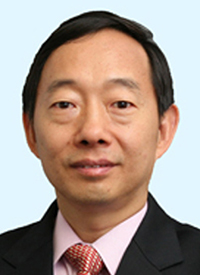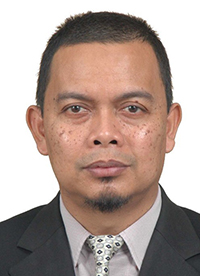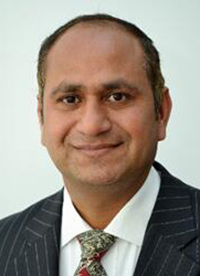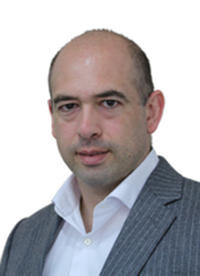Keynote Speakers/主讲嘉宾
Keynote Speakers/主讲嘉宾

Dr. Jinfeng Zhou 周晋峰博士
Secretary General, China Biodiversity Conservation and Green Development Foundation (CBCGDF)
Vice Chairman, World Green Design Organization (WGDO)
Member, IUCN World Commission on Environmental Law (WCEL)
Member, IUCN WCPA Task Force on Other Effective Area-Based Conservation Measures (OECMs)
Executive Committee Member, IUCN Marine Connectivity Working Group (MCWG)
周晋峰博士,
中国生物多样性保护与绿色发展基金会秘书长
世界绿色设计组织(WGDO)副主席
世界自然保护联盟“世界环境法委员会”(WCEL)委员
世界自然保护联盟世界自然保护地委员会“其他有效的区域保护措施(OECMs)”特别工作组成员
世界自然保护联盟(IUCN)海洋连通性工作组执委
Research Area 研究领域
Biodiversity conservation 生物多样性保护
Speech Title: Green Engineering Needs to Fundamentally Solve the Problem of Green Thinking Deficiency 绿色工程,亟需从根本上破解绿色思维缺失症
摘要:通过分析当下市政工程、环境管理项目、生态修复项目,因普遍缺乏绿色思维导致所谓绿色工程南辕北辙的典型案例,说明甄别工业文明错误观念、真正贯彻绿色思维,对于落实生态文明建设的重要性。

Department of Building Services Engineering, The Hong Kong Polytechnic University
香港理工大学 屋宇装备工程系
Research Area 研究领域
Renewable Energy Applications and Energy Saving in Buildings 可再生能源的应用和建筑节能
Speech Title: Design optimization of hybrid renewable energy and electrical energy storage systems for power supply to buildings建筑中应用风光互补混合电力蓄能系统的优化设计研究
Abstract:Renewable energy applications with electrical energy storage have promising potential to reduce carbon emissions and maintain a sustainable energy supply within an urban context, especially for the building sector with large amount of energy consumption. The technical, economic and environmental feasibilities of using hybrid renewable energy and electrical energy storage systems for the power supply to both office and residential buildings are analysed based on a transient system simulation program, experiment validation and multi-objective optimization methods from our studies. A novel energy management strategy considering the battery cycling aging, grid relief and time-of-use pricing is proposed for design optimization of a photovoltaic-battery storage system applied in a practical low-energy office building. Comprehensive technical and economic criteria are developed to size and optimize the hybrid photovoltaic-wind-battery system for the power supply to high-rise residential buildings. The hybrid photovoltaic-wind system with battery and hydrogen storage technologies is optimized for hydrogen vehicles integrated buildings for proposing various decision-making strategies focusing on the priorities of different stakeholders. This study can researchers and engineers to understand and design renewable energy and electrical energy storage systems for achieving higher penetration of renewables in buildings and further reduction of carbon footprint in urban regions.
Keywords: Solar photovoltaic; Wind turbine; Battery energy storage; Hydrogen energy storage; Multi-objective optimization

School of Civil Engineering, Universiti Sains Malaysia 马来西亚理科大学 土木工程学院
Research Area 研究领域
Civil Engineering (Environmental Engineering-Landfill technology, land pollution, leachate migration, pollution control)土木工程(环境工程-堆填技术、土地污染、渗滤液迁移、污染控制)
Speech Title: Sustainable solid waste disposal for developing countries: A journey to sanitary landfilling 发展中国家的可持续固体废物处理:卫生填埋之旅
Abstract:Municipal solid waste (MSW) disposal has become an ever-increasing problem in many parts of the world, especially in developing countries such as Malaysia. Most solid waste landfill sites in these countries practice either open dumping or unsanitary landfilling with very minimum or no environmental protection. To date, landfilling is still the preferred option for the disposal and management of municipal solid waste (MSW) due to its low-cost operation. The main issue in landfilling in developing countries is the management of landfill leachate and gases. Implementation of a fully engineered sanitary landfill is necessary, and a more economically feasible landfill design is crucial, particularly for developing countries towards achieving the goal for sustainable development. The concept of landfill technology and aA journey to sanitary landfilling will be discussed in this presentation. Special attention will be made on the principles of a semi-aerobic landfill in developing countries as a good alternative. The paper also highlights the main issues in the design and operation of the sanitary landfill and discusses the associated challenges faced by the authorities and landfill operators.
Keywords: Municipal solid waste (MSW); landfill technology; landfill leachate; semi-aerobic landfill; sustainable development; landfill gases

Prof. Mohan Kolhe
Faculty of Engineering and Science, University of Agder, Norway 挪威阿格德大学
Research Area 研究领域
Smart Grid, Grid Integration of Renewable Energy Systems, Home Energy Management System, Integrated Renewable Energy Systems for Hydrogen Production, Solar and Wind Energy Engineering 智能电网、可再生能源系统的电网集成、家庭能源管理系统、可再生能源制氢集成系统、太阳能和风能工程
Speech Title: Implementation of Demand Response Program in Residential Households (EU FP7 Project ‘Scalable Energy Management Infrastructure for Aggregation of Household’ SEMIAH) 在居民家庭中实施需求响应计划(欧盟FP7项目“可扩展的家庭聚集能源管理基础设施”)
Abstract:Nowadays due to major technological, scientific and commercial breakthrough by developing an Information and Communication Technology (ICT) infrastructure, the demand side management can be implemented in specific sectors within the smart grid environment. Demand side management in the domestic sector can play an important role in reducing the peak demand on the power system network as well as facilitating integration of renewable energy resources. It can help in reducing stress and overloading within the distribution network and on power lines. In many countries, there are various demand response programs implemented for industrial and commercial sectors. There are very few demand response programs in use for energy management in residential sector using ICT technologies.
In this keynote speech, the learning from the EU FP7 project tilted ‘Scalable Energy Management Infrastructure for Aggregation of Household’ (SEMIAH) will be shared. The SEMIAH project has pursued the implementation of demand response using ICT infrastructure in residential households using centralized approach as virtual power plant. This infrastructure has enabled scheduling of selected power intensive selected residential loads’ operation to off-peak demand periods for reducing the expected peak demand on the electrical energy network. The SEMIAH project has used state-of-the-art approach using ICT infrastructure to support the deployment and modernisation of home energy management systems for demand side management. In this project, partners have contributed in developing a centralised energy management system for provisioning of demand response services based on aggregation, forecasting, and scheduling of electricity consumption in the residential sector. The SEMIAH concept has enabled aggregation of households connected to the system and acted through direct load control to shift or curtail specific power intensive electrical loads considering the flexibilities of the prosumers and the utility demand limits. The project has delivered a hardware solution that enables control of selected electrical load operation based on demand limits considering the renewable energy generation. To successfully implement SEMIAH, the project consortium has studied new business models for electricity players and residential customers to quantify costs and benefits for actors in the value chain. The SEMIAH system shall contribute to the benefit of residential customers, energy utilities, and the society in general through lowering electricity bills, and providing higher stability of the electricity grid. Hereby, the project will enable savings in CO2 emissions and fuel costs, as well as reducing investments in electricity network expansions and peak power plants.

Prof. Ismael Guerrero Arias
Loyola University of Spain 西班牙洛约拉大学
Loyola University of Spain; President Energy Group – Canadian Solar 阿特斯能源组的总裁
Research Area 研究领域
Solar Energy, Photovoltaics, Renewable Energies, Silicon Wafers Manufacturing 太阳能、光伏、可再生能源、硅片制造
Speech Title: Potential of unsubsidized solar energy and energy storage. 无补加能的太阳能和储能的潜力
Abstract:Where the solar industry is today in compared with other sources of electricity generation and what to expect of the short term future of energy generation. Solar Energy experienced a remarkable evolution on the past decade and became the most competitive way to produce electricity. The talk would be a general summary of the main evolutions that took place in the solar industry to became the real alternative it is today and the challenges to come in the next decade and the main milestones expected to be achieved. We will also discussed how the regulatory framework could look like making parallelism with other industry and how did it evolved like the telecommunications industry. Both technical as well as financial milestones to happen will be described to analyze how the solar industry deployment could look like in the next decade.



